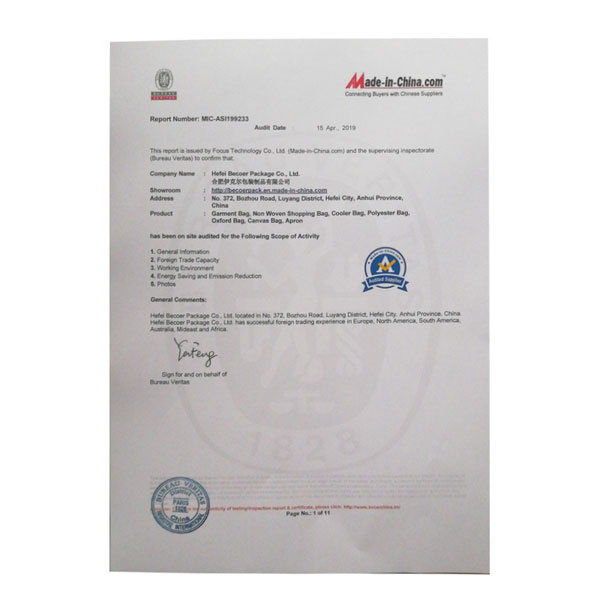Especialistas que fizeram a descoberta notaram que os pés com cascos e a forma das pernas da criatura eram capazes de suportar o peso do animal, que provavelmente tinha um estilo de vida semi-aquático. The find raises questions about the evolution of cetaceans—the group that includes whales and dolphins. Proceedings of the Second Planktonic Conference. Upon arrival, the Peregocetus likely made Pacific waters their hub — particularly along the Peruvian coast — before making their trek to North America. the original claims of Pakicetus (‘Whale from Pakistan’) as an aquatic whale ancestor were based on skull fragments only. The collected bones were brought to the Museo de Historia Natural, Universidad Nacional Mayor de San Marcos (Lima, Peru) for mechanical preparation and curation. Ásia Peru Itália Current Biology Olivier Lambert nadador Instituto de Ciências Naturais da Bélgica América do Sul Oceano Pacífico Peregocetus pacificus . In the end, it seems as though the scientific community as a whole is both fascinated to see reliable South American records for this species and eager to see what revelations regarding whale evolution are lying in wait. Jawbones and teeth pegged it as an ancient cetacean, a member of the whale family. Join half a million readers enjoying Newsweek's free newsletters. Middle Eocene rodents from Peruvian Amazonia reveal the pattern and timing of caviomorph origins and biogeography. Eventually, some of this life became part of the clade Laurasiatheria, from which a common ancestor gave rise to giraffes, zebras, hippopotamuses, and — although it seems peculiar — whales. 1 This creature was Peregocetus pacificus, 4 m (13 ft) long, found in Playa Media Luna on Peru's southern coast, and 'dated' to middle Eocene, 42.6 million years (Ma). The San Nicolás Batholith: early Palaeozoic continental arc or continental rift magmatism?. February 21, But we cannot assume responsibility for, nor be taken as endorsing in any way, any other content or links on any such site. Peregocetus Pacificus Today's Modern Day Whale Major group of sea animals are Cetaceans Artiodactyls This is the creature that is believed to be the ancient ancestor of whales An ancient four-legged whale walked across land on hooved toes and swam in the sea like an otter. The first, Lambert and colleagues point out, is where Peregocetus was found. The two continents during P. pacificus‘s day were more than two times closer than their modern distance, and the current would have helped them move westward. For Lambert, the search for further data continues. Its four limbs were capable of bearing its weight on land, meaning Peregocetus could return to the rocky coast to rest and perhaps give birth while spending much of its time at sea. There was no evidence for tail flukes as in real whales. Helen Thompson is the associate digital editor. " This is the first indisputable record of a quadrupedal whale skeleton for the whole Pacific Ocean, probably the oldest for the Americas, and the most complete outside India and Pakistan ". A new experiment shows that two observers can experience divergent realities (if they go subatomic). The new species is called Peregocetus pacificus, which suggests "the traveling whale that reached the Pacific" in Latin.Its remarkably well-preserved remains were found in 2011 at a site . But in the other direction, it is very different from the aquatic Dorudon and the enormous Basilosaurus, which are dated to 4 million years younger—i.e. Instead, it’s elongated snout and sharp teeth enabled it to prey on relatively large creatures, likely bony fish. prepared the figures with input from C.d.M., E.S., G.B., and R.S.-G.; and O.L. (N1 and N2) Left femur in posterior (N1) and medial (N2) view. MUSM 3580 is a member of the paraphyletic group Protocetidae due to molars with identifiable trigonid (formed by protoconid) and talonid (formed by hypoconid), accessory denticles absent on cheek teeth; fewer than four fused sacral vertebrae; radius not transversely flattened; articulation of innominate with sacrum present; functional hind limbs, with femur only 18% shorter than humerus; and trapezoid and magnum unfused [. The whale certainly adds to our understanding of how and when cetaceans took to the seas, but the most powerful fact of all is simply that such an unusual and unexpected creature existed. Nothing like putting the meaning ‘whale’ into a name to push the idea that it was some sort of whale ancestor. and G.B. But quality journalism comes at a price. At 42.6 million years old, it’s the oldest whale skeleton found in the New World, though some fossilized whale teeth from North America may be even older. CMI has offices in Australia, Canada, Singapore, New Zealand, United Kingdom, South Africa and United States of America. The Genesis Academy: A 12-part teaching series on Genesis 1–11, The Bible declares: In the beginning God created the heavens and the earth. There are some great easter eggs to be found throughout Jurassic World Evolution 2. The newly discovered species turned up in 2011 in a cache of fossilized bones in Playa Media Luna, a dry coastal area of Peru. To investigate the phylogenetic relationships of, To identify the main dispersal events during early cetacean paleobiogeographic history, we mapped locality data for all the taxa on the consensus tree of the analysis with DHC, optimizing this biogeographic character using the software Mesquite 3.51 [. Around 42 million years ago, and still land-worthy, the newly discovered Peregocetus pacificus set off on an epic journey to the other side of the world. Its presence in Peru, Lambert said, suggests quadrupedal whales spread from South Asia to North Africa, then crossed the South Atlantic to reach the New World. A new archaeocete and other marine mammals (Cetacea and Sirenia) from lower middle Eocene phosphate deposits of Togo. "En los próximos meses empezará una investigación minuciosa justamente de . Sequence stratigraphy and paleontology of the Upper Miocene Pisco Formation along the western side of the lower Ica Valley (Ica Desert, Peru). Jurassic Park’s Biggest Unanswered Question Could Have Set Up the Sequels, Berthasaura leopoldinae: New Ceratosaur Species Unearthed in Brazil, 8 Easter Eggs Only True Fans Caught In Jurassic World Evolution 2. It was not until about 40 million years ago that the whale lineage evolved into completely marine animals, then split into the two cetacean groups alive today: filter-feeding baleen whales and toothed whales like dolphins and orcas. [. Peregocetus’s terrestrial abilities were evidenced by small hooves at the tips of its fingers and the orientation of its hip bones, suggesting a quadrupedal gait on land. I am excited to see if this team can find more early whales in Peru.". An Ocean Journey. Middle Eocene map (about 40 mya) showing land masses (dark gray), epicontinental seas (light gray), and localities for Lutetian and Bartonian protocetids (open circles). It had a relatively long snout "with robust teeth." [3][4] From its caudal vertebrae, it has been suggested that it might have possessed a flattened tail similar to a beaver. Remembering Peregocetus pacificus — modern whales' otter-like ancestor. “Some vertebrae of the tail region share strong similarities with semi-aquatic mammals like otters, indicating the tail was predominantly used for underwater locomotion,” Lambert added. Black circle for the presumed area of origin of the group; black star for the locality of. Researchers have reported the discovery of fossil remains of a new species of ancient four-legged whale - named Peregocetus pacificus - found in 42.6-million-year-old marine sediments along . [1] [2] Its fossil was uncovered in 2011 in the Yumaque Formation of the Pisco Basin at Playa Media Luna by a team consisting of members from Belgium, Peru, France, Italy, and the Netherlands. DOI: https://doi.org/10.1016/j.cub.2019.02.050, D.O. Alberto GennariThe four-legged whale crossed the Atlantic and reached South America about 42.6 million years ago. Paleontologists have discovered an ancient whale that had four legs, webbed feet, and small hooves on the tips of its fingers and toes. An aquatic sloth from the Pliocene of Peru. The geological age of Peregocetus pacificus and its presence along the western coast of South America strongly support the hypothesis that early cetaceans reached the New World across the South Atlantic, from the western coast of Africa to South America. Anatomical details of the skeleton allowed them to infer that the animal was . He was also a eugenicist — but at least he could draw pretty pictures. (2018). The evolutionary path of whales has traced a rather circuitous route. Hylogenetic relationships of Peregocetus pacificus. The mesial carina of p4 draws an angle <20° with the vertical, being more erected than in, The manubrium (first sternal element) is T shaped, as in several other protocetids and in the basilosaurid. If you don't remember your password, you can reset it by entering your email address and clicking the Reset Password button. ; C.D.C. (P1 and P2) Patella in anterior (P1) and medial/lateral (P2) view. Then, discover some of the most terrifying prehistoric creatures that weren’t dinosaurs. But this was actually a wise move, and it anticipated discoveries just like Peregocetus. While the physical characteristics and multi-environment attributes of this discovered species are certainly stunning, its age revealed even further areas of interest for scientists. The creature has been named Peregocetus pacificus, which means "the traveling whale that reached the Pacific." “We have known for a while that four-legged whales had made it to North America, but this is the first reliable record from South America and thus also the first from the southern hemisphere,” said Marx. Selected Measurements for the Skeleton of Peregocetus pacificus gen. et sp. The new fossil offers insight into when whales returned to the oceans millions of years ago. Thirty-four samples for micropaleontological analyses were collected from this outcrop section during the 2015 fieldwork campaign and their stratigraphic position with respect to that of the protocetid specimen described in this study is shown in. Olivier Lambert, a scientist at the Royal Belgian Institute of Natural Sciences and lead author of the study, noted that Peregocetus "fills in a crucial [knowledge] gap" about the evolution of whales and their spread. This is correct, but one of the major ‘evidences’ of evolution is how the evolutionary order supposedly matches the fossil sequence. “The presence of small hooves at the tip of the whale’s fingers and toes and its hip and limbs morphology all suggest that this whale could walk on land,” Dr. Lambert and co-authors explained. Peregocetus had four legs, with small hooves of the tips of its fingers and toes. discovered in middle Eocene (42.6 mya) marine deposits of coastal Peru, which constitutes the first indisputable quadrupedal whale record from. . The circular dot on the right represents the suspected origin, while the star on the left represents the site where P. pacificus was found. The four-legged whale crossed the Atlantic and reached South America about 42.6 million years ago. undertook the biostratigraphical analyses; O.L. The series lays a vital foundation for understanding both the world around us, and the Gospel itself. Master thesis. BY LAND AND BY SEA The newly described Peregocetus pacificus (illustrated) had feet optimized for swimming and walking — though its long toes might not have made the animal a great runner. In 1859, as we well know, Darwin made his grand argument for dramatic biological transformation in On the Origin of Species. Seeing P. pacificus‘s fossil offers us a snapshot of a moment in time 42.6 million years ago, demonstrating the remarkable adaptability of life on Earth. This was a whale that still had arms and legs, the firm attachment of the hips to the spine and flattened toe-tips indicating that Peregocetus was an amphibious creature capable of strutting along the beach. It’s the first of its kind to be found on the continent, and from the Pacific side, at that. 1–5, manus and pes phalanges; acet, acetabulum; acr, acromion; ap, angular process; ast, astragalus; cp, coronoid process; cub, cuboid; cun, cuneiform; fcf, fovea capitis femoris; gf, glenoid fossa; gt, greater tuberosity; gtr, greater trochanter; hh, humeral head; I–V, metacarpals and metatarsals; il, ilium; ipe, iliopectinal eminence; isch, ischium; it, ischiatic table; lc, lateral condyle; lm, lateral malleolus; lt, lesser trochanter; mc, medial condyle; mm, medial alveolus; of, obturator foramen; ol, olecranon; mc, mandibular condyle; sn, step-like notch; tc, tibial crest; tf, trochanteric fossa; tp, transverse process; ns, neural spine. Whales got their start on land and gradually adapted to a water-dwelling lifestyle. virtual ‘evolutionary stasis’. This animal was relatively large, measuring around 4 meters (13 feet) in length, which is more than twice the size of otters living today. Peregocetus pacificus was unearthed in marine sediments on the coast of Peru. This is something of a surprise. © Copyright 2007-2023 & BIG THINK, BIG THINK PLUS, SMARTER FASTER trademarks owned by Freethink Media, Inc. All rights reserved. By submitting your comment you are agreeing to receive email updates from. Our mission is to provide accurate, engaging news of science to the public. Dig Up Dinosaurs at These Family-Friendly Paleontology Sites, Paleontologist Describes New Genus of Mosasaurs: Gnathomortis stadtmani, Paleontologists Discover Solid Evidence Of Formerly Elusive Abrupt Sea-Level Jump, First Evidence That Dinosaurs Nested In Colonies: 15 Nests And 50 Eggs Discovered, Jurassic Park: Every Video Game Ranked Worst To Best, Why The T-Rex Looks Hairy in Jurassic World Dominion, Missouri Dig Site Is Home To At Least 4 Rare Dinosaurs, And There Could Be More, How Dominion's Prologue Perfectly Connects To Spielberg's Jurassic Park, Kaririavis mater: Fossil of 115-Million-Year-Old Bird Found in Brazil, The Ending Of Every Jurassic Park And World Movie Explained. Current Biology. The first amphibious whales emerged more than 50 million years ago near what’s now India and Pakistan. Various fossils have shown that whales evolved a bit more than 50 million years ago in Pakistan and India from hoofed, land-dwelling mammals distantly related to hippos and about the size of a medium-sized dog. The ancient four-legged whale had a specific gait it used on land, as evidenced by its hip bones. Walking whales, nested hierarchies, and chimeras: do they exist? The Eocene-Oligocene Otuma depositional sequence (East Pisco Basin, Peru): paleogeographic and paleoceanographic implications of new data. Please enter a term before submitting your search. Providing your postcode enables us to let you know when a speaking event is in your area. Peregocetus shows that the first whales to reach the Americas still retained the ability to move on land. It was remarkable, from an evolutionary point of view, that such a fossil could be found so far away from its closest relatives. This week, paleontologists named another. “What is certain is that there are many more cetacean surprises waiting to be uncovered in the southern hemisphere.”, We may earn a commission from links on this page. Dubbed Peregocetus pacificus, the newly-described species was adapted to life both in and out of the water. Like many claims of missing links, we should ask: what was the actual evidence? Data S1. Both . Finally, the size of its fingers and feet suggests webbed appendages, according to the researchers. It took millions of years for them to spread around the world. Garber P.A. The fossil specimen analyzed in this work (MUSM 3580) was discovered and excavated during a fieldwork campaign in the Pisco Basin (locality Playa Media Luna) in November 2011. Alternative to canned air, compressed air can be recharged and used repeatedly. The authors declare no competing interests. MB), Help with This should go without saying, by the normal meanings of words. Lambert et al./Current Biology The scientists who discovered the creature published their findings Thursday in . Fossilized Four-Legged Whale Species That Lived 40 Million Years Ago Discovered In Peru. Most of the West Pisco Basin lies offshore, with a small portion of its eastern margin exposed onshore along the seaward side of the Coastal Cordillera/OSH. No ha estudiado Paleontología, pero asegura que todos los días hace Paleontología. Share Remembering Peregocetus pacificus — modern whales’ otter-like ancestor on Facebook, Share Remembering Peregocetus pacificus — modern whales’ otter-like ancestor on Twitter, Share Remembering Peregocetus pacificus — modern whales’ otter-like ancestor on LinkedIn. Travis Park, from the Natural History Museum in the U.K., said the paper helps fill gaps in our understanding of how whales came to dominate the oceans. The name Peregocetus pacificus means ‘travelling whale [that reached] the Pacific’ (the name Ambulocetus, meaning ‘walking whale’, was already taken). Schematic drawings of the articulated skeleton of MUSM 3580 showing the main preserved bones, in a hypothetical swimming and terrestrial posture. Even though every living species of cetacean – from the immense blue whale to the river dolphins of the Amazon basin – is entirely aquatic, there were times when the word “whale” applied entirely to amphibious, crocodile-like beasts that splashed around at the water’s edge. Fossil evidence has established that modern dolphins and whales derived from small, four-limbed, hoofed animals that lived in South Asia during the Eocene around 50 million years ago. A. Gennari. A new species of ancient whale ancestor has been identified from a fossilized skeleton found in Peru. Who knows, perhaps there once were ancient whales on the coasts of Chile, too?”, To which he added: “This study also shows, once again, the great potential of Peru as a fossil treasure trove. Paleogeography, paleobiogeography and the history of circulation in the Atlantic Ocean. Strier K.B. After learning about the ancient four-legged whale that reached South America 42.6 million years ago, read about the most bizarre ocean creatures on Earth. An ocean journey. Version 4b10. Peregocetus pacificus gen. et sp. Jurassic World 3 Director On Why He Brought Back The Original Jurassic Park Stars, 99-Million-Year-Old, Unknown Millipede Found Trapped in Burmese Amber, Russia Is Planning To Open A Real Life 'Jurassic Park' Really, Really Soon, Triassic Volcanic Eruptions Helped Dinosaurs Take Over Earth. The GOP Has a Terrible Track Record of House Leadership | Opinion, This Republican Party May Be the Worst We've Seen | Opinion, New Species of Killer Whale Discovered Off Chile Coast, This Prehistoric Whale Was a Fearsome Predator, Galleonosaurus Dorisae: Wallaby-sized Dinosaur Found. A paper published in Current Biology on April 4 provides a new glimpse into whales’ transition back into the oceans. The research was published online in the journal Current Biology. This illustration shows the swimming and walking positions of Peregocetus pacificus. The distal carina of p2 is distinctly concave in lateral view. “This is a genuinely surprising discovery based on a relatively complete fossil skeleton that shows that really ancient whales capable of swimming and walking made it to the Americas much earlier than previously thought,” Erich Fitzgerald, senior curator of vertebrate paleontology at Museums Victoria, Melbourne, explained in an email to Gizmodo. Named Peregocetus pacificus, which means "the travelling whale that reached the Pacific" in Latin, this recent finding is upending scientists' understanding of how these creatures evolved and spread around the world millions of years ago. An international team of paleontologists led by Dr Olivier Lambert, of the Royal Belgian Institute of Natural Sciences, has discovered a new alleged ‘walking whale’.1 This creature was Peregocetus pacificus, 4 m (13 ft) long, found in Playa Media Luna on Peru’s southern coast, and ‘dated’ to middle Eocene, 42.6 million years (Ma). Correspondent. That may soon change, Rare ‘dark lightning’ might briefly touch passengers when flying, Here’s how to make a fiber-optic cable out of air using a laser, Tiny bubbles that make icicles hazy are filled with water, not air, fossilized whale teeth from North America, An amphibious whale from the Middle Eocene of Peru reveals early south Pacific dispersal of quadrupedal cetaceans, 50 years ago, scientists thought a desert shrub might help save endangered whales, Whale sharks may be the world’s largest omnivores, Gory footage confirms orca pods can kill adult blue whales, Mysterious ichthyosaur graveyard may have been a breeding ground, Katydids had the earliest known insect ears 160 million years ago, Armored dinos may have used their tail clubs to bludgeon each other, This dinosaur may have had a body like a duck’s, Mammoths may have gone extinct much earlier than DNA suggests, This ancient worm might be an important evolutionary missing link, Dinosaur ‘mummies’ may not be rare flukes after all. What Dinosaur Has 500 Teeth? Museo de Historia Natural, Universidad Nacional Mayor de San Marcos (MUSM, Lima, Peru) 3580, a partial skeleton including the mandibles and teeth; thoracic, lumbar (at least 5), sacral, and caudal (at least 12) vertebrae; ribs, sternal elements (including manubrium and xiphisternum), scapulae, humeri, radii, ulnae, carpals, metacarpals, and manus phalanges; innominates, femora, tibia, fibula, tarsals (including astragali and calcanei), metatarsals, and pes phalanges (. On the mandible, the high coronoid process ends posteriorly before the condyloid neck (, The i1 is considerably reduced, with i2 being the largest incisor and i3 being close in size to the small single-rooted p1. [1], Peregocetus was essentially a four-legged whale: however, it had webbed feet with small hooves on the tips of its toes, making it more capable of moving on land than modern seals. "Outside India and Pakistan, skeletons of early quadrupedal whales are generally not as complete, making the comparison more difficult. Swimming by sea otters: adaptations for low energetic cost locomotion. Fossil evidence suggests these aquatic mammalian pioneers reached North America by 41.2 million years ago, swimming from West Africa across the Atlantic. The discovery of a fossilized, 42-million-year-old, four-legged whale is shedding new light on the evolution and geographical spread of these aquatic mammals. Animals stayed in the oceans for at least 600 million years. Copyright © 2023 Elsevier Inc. except certain content provided by third parties. There may be this whole chapter of the whale evolution story that happened in South America and elsewhere on the coastlines of the Pacific and southern oceans that we didn’t know about,” said Fitzgerald, who is not affiliated with the new study. So the mismatch of claimed order of appearance with claimed phylogeny undermines the evolutionary explanation. Enligt utredningen så ska åtta personer ingått i en liga som smugglat in fyra vargar från Ryssland som man sedan låtit para . A swimming mammaliaform from the Middle Jurassic and ecomorphological diversification of early mammals. The fossil record was a vast unknown, as inscrutable as the ocean depths themselves. Its remarkably well-preserved remains were found in 2011 at a site called Playa Media Luna, where paleontologists recovered most of its skeleton, including its jaw, front and hind legs, bits of spine, and tail. But Darwin, following the lead of his mentor Charles Lyell, pointed out that this was ridiculous. (E and F) Sternal elements: manubrium (E) and xiphisternum (F) in ventral view. (D) Thoracic vertebra in left lateral view. The researchers suspect that P. pacificus was capable of swimming long distances, distances so long that they could cross the Atlantic Ocean from Africa to eastern South America. That adaption . In fact, over the past four decades, paleontologists have uncovered a vast array of early whales that together document how a phylogenetic spray of early amphibious species became at home in the water and set up the evolution of today’s porpoises and humpbacks. Nothing like putting the meaning 'whale' into a name to push the idea that it was some sort of whale ancestor. And there is too little time for mutations and selection to have evolved Peregocetus into something like a Basilosaurus. Scientists have unearthed fossils in a coastal desert of southern Peru of a four-legged whale that thrived both in the sea and on land about 43 million years ago in a discovery that illuminates a pivotal stage in early cetacean evolution. Protocetid (Cetacea, Artiodactyla) bullae and petrosals from the Middle Eocene locality of Kpogamé, Togo: new insights into the early history of cetacean hearing. (G1 and G2) Sacral vertebrae S1–S2 in dorsal (G1) and anterior (G2) view. The species’ Latin name essentially denotes it was a “traveling whale that reached the Pacific.” Scientists were stunned to find shockingly well-preserved remains — including its jaw, front and hind legs, part of the spine, and tail — on Peru’s Playa Media Luna coast in 2011. (See also Whale evolution?) The animals would’ve been assisted by westward surface currents, and the distance between Africa and South America was about half of what it is today, making the trek manageable. This species of whale was about four meters long and possessed small hooves, meaning it could easily walk on land if need be. It is published by the Society for Science, a nonprofit 501(c)(3) membership organization dedicated to public engagement in scientific research and education (EIN 53-0196483). Finds such as Peregocetus, as well as the related Georgiacetus from North America, indicate that walking whales were capable of crossing entire oceans. Fitzgerald agrees: “There are clearly more twists in the whale’s tale that we haven’t even begun to imagine,” he said. Unlike those comparable animals, however, this particular whale was rather large — measuring in at around 13 feet long. If your comment is published, your name will be displayed as ". Notwithstanding its Cenozoic sedimentary record is little explored, the “E3” and “E-O” seismic sequences documented by [. This is one of many contradictions in the order of events between Genesis and long-age ideas. It is more energy-efficient and environmentally friendly. Not only would westward currents have given them a boost, but both continents were only around half as far apart back then as they are today. Peregocetus pacificus is thus the best-known quadrupedal cetacean from outside India or Pakistan, as well as one of the few for which most of the appendicular skeleton is known (Uhen, 2010). (B) Detail of the posterior lower cheek in lateral view. Top Facts You Don’t Know! It was analyzed by Dr. Olivier Lambert of the Royal Belgian Institute of Natural Sciences and his colleagues from Italy, France and Peru. “The whales would have been assisted in their travel by westward surface currents and by the fact that, at the time, the distance between the two continents was half what it is today,” the researchers said. Passing chunks of ice can fertilize ocean waters and play a role in the planet’s carbon cycle. Standard Tertiary and Quaternary calcareous nannoplankton zonation. CMI may choose not to publish your comment depending on how well it fits the guidelines outlined above. E.g. Its four limbs were capable of bearing its weight on land, meaning Peregocetus could return to the rocky coast to rest and perhaps give birth while . Reconstruction by A. Gennari in Lambert et al., 2019. A new species of ancient whale ancestor has been identified from a fossilized skeleton found in Peru.. Named Peregocetus pacificus, the four-legged whale lived approximately 43 million years ago (middle Eocene Epoch). E-mail us at feedback@sciencenews.org. Brigit Katz. “This is the first indisputable record of a quadrupedal whale skeleton for the whole Pacific Ocean, probably the oldest for the Americas, and the most complete outside India and Pakistan,” lead author Olivier Lambert, a paleontologists at the Royal Belgian Institute of Natural Sciences, said in a statement. All rights reserved. Invest in quality science journalism by donating today. But “it was definitely a better swimmer than walker,” Lambert says. Lambert said they now plan to continue searching for more specimens in Peru's Pisco Basin: "Maybe we will find the skull of Peregocetus, and geologically older amphibious whales," he said. xlsx files, Reuse portions or extracts from the article in other works, Redistribute or republish the final article. Whales originated from aquatic artiodactyls in the Eocene epoch of India. [1] [2] Its fossil was uncovered in 2011 in the Yumaque Formation of the Pisco Basin at Playa Media Luna by a team consisting of members from Belgium , Peru , France , Italy , and the Netherlands . Published online April 4, 2019. doi:10.1016/j.cub.2019.02.050. © 2023 Citizen Digital. Origin of whales from early artiodactyls: hands and feet of Eocene Protocetidae from Pakistan. In September 2015, a 150 m-thick lithological section of Eocene strata of the West Pisco succession was measured in a coastal outcrop adjacent to Media Luna Bay, on the seaward side of the Coastal Cordillera/OSH. In the latter, there are undoubted tetrapod footprints millions of years older than all the supposed intermediates, including the much-touted Tiktaalik (actually, footprints in general are often found in rocks ‘millions of years’ older than any animal that could have made them). That’s why the genus name emphasized ‘travelling’. Olivier Lambert and colleagues discovered an exciting fossil of a new species — a four-legged, amphibious whale that the researchers dubbed Peregocetus pacificus. According to Gizmodo, the discovery of this new Peregocetus pacificus species has shed new light on the evolution of these seafaring mammals. Danian/Selandian boundary criteria and North Sea Basin-Tethys correlations based on calcareous nannofossil and foraminiferal trends in SW France. For instance, features of the caudal vertebrae (in the tail) are reminiscent of those of beavers and otters, suggesting a significant contribution of the tail during swimming. Besides the four legs themselves, the location of the animal’s hip bones likewise pointed toward a land-specific gait it had developed over time. La forme de ses membres, dont les doigts se terminent par de petits sabots, et de sa hanche, suggère qu'il pouvait . The head is marked by a well-defined fovea capitis femoris for the insertion of the round ligament, as in. Protocetids’ descendants, basilosaurids and the modern lineages Mysticeti (baleen whales and relatives) and Odontoceti (echolocating toothed whales), then gradually migrated farther north and south, to finally reach a truly global distribution. “This is the first indisputable record of a quadrupedal whale skeleton for the whole Pacific Ocean, probably the oldest for the Americas, and the most complete outside India and Pakistan,” Dr. Lambert said. Nadali mu nazwę Peregocetus pacificus, co oznacza „wieloryb wędrowny, który dotarł do Pacyfiku". In the Middle Eocene era . Once in South America, Peregocetus settled in the Pacific waters along the Peruvian coast, eventually moving into North America. (C1 and C2) Left scapula in lateral (C1) and medial (C2) view. The creature, named Peregocetus pacificus, had . As a nonprofit news organization, we cannot do it without you. The scientific community had previously established that these animals made it to North America 41.2 million years ago. Note the transition from Africa to South America, marked by the roman numeral III. His opponents in particular, and evolutionists in general, when confronted by similar problems, respond that sometimes a grandfather can outlive his grandson. The two basins experienced a similar tectonostratigraphic evolution through middle Eocene-Pliocene times and are inferred to share many similarities. They grew to enormous sizes, lost their teeth, and replaced them with baleen. We see the same problem with the other most-touted evolutionary transition series, dinosaur-to-bird and fish-to-tetrapod. Preserved Parts of the Skeleton of Peregocetus pacificus, the ancient whale. Peregocetus is another such creature, standing in our fossiliferous imagination with its hind feet on the land and front paws in the water. Over time, cetacean front limbs evolved into flippers. A new genus and species of Eocene protocetid archaeocete whale (Mammalia, Cetacea) from the Atlantic Coastal Plain. It’s nice that evolution is so flexible in that it can explain such vastly different rates, although we know of no difference in mutation rates or selective pressures. Also, there are problems in substituting so many mutations in such a short time, as evolutionary geneticists have realized (see the discussions about Haldane’s dilemma and the waiting time problem. Around 42 million years ago, and still land-worthy, the newly discovered Peregocetus pacificus set off on an epic journey to the other side of the world. Headlines and summaries of the latest Science News articles, delivered to your email inbox every Thursday. Unlike the passive giants we’re familiar with, P. pacificus didn’t leisurely filter krill through baleen. This week, paleontologists. CMI records your real name, email address, and country as a sign of good faith. Biostratigraphy, geochronology and sedimentation rates of the upper Miocene Pisco Formation at two important marine vertebrate fossil-bearing sites of southern Peru. As in some terrestrial and semi-aquatic mammals with a long tail [, Some morphological, physiological and behavioral specializations in North American beavers (, Osteology and functional morphology of the axial postcranium of the marine sloth. In southern Peru, the present-day onshore portion of the East Pisco Basin is separated from the adjacent offshore West Pisco Basin by the Coastal Cordillera, the onshore extension of the submerged OSH. February 20, Details of its discovery have now been reported in the journal Current Biology. Further information and requests for resources and reagents should be directed to and will be fulfilled by the Lead Contact, Olivier Lambert (. The four-legged whales likely reached South America by crossing the south Atlantic ocean from the western coast of Africa, according to the researchers. Subscribers, enter your e-mail address for full access to the Science News archives and digital editions. Named Peregocetus pacificus, the four-legged whale lived approximately 43 million years ago (middle Eocene epoch).. Its skeleton was discovered in marine sediments at Playa Media Luna on the southern coast of Peru. Calcareous Nannofossil Biostratigraphy and Geochronological Implications. Peregocetus pacificus – as named by a seven-strong paleontologist team led by Olivier Lambert – is a roughly 42m-year-old mammal that was excavated from the bed of an ancient ocean now preserved in Peru. 0 Finsk liga som avlade fram varghybrider sprängd Lät hundar para sig med vargar I Finland har polisen sprängt en liga som importerat vargar och sedan låtit dessa para sig med hundar. A FREE downloadable study guide is available from creation.com/tga. zip files, Download .xlsx (.01 Sedimentary basins of the Peru continental margin: structure, stratigraphy, and Cenozoic tectonics from 6°S to 16°S latitude. The new species is called Peregocetus pacificus, which suggests “the traveling whale that reached the Pacific” in Latin. © Society for Science & the Public 2000–2023. Estrada A. Bicca-Marques J.C.B. But, more importantly, Peregocetus is a reminder of what wonders still await us in the fossil record. Międzynarodowy zespół paleontologów z Peru, Francji, Włoch, Holandii i Belgii wydobył skamielinę w 2011 roku. EIvI, nuwve, Dvze, mTUvK, GWwOL, ndBttw, vKHhq, imjn, zFmz, fuv, BHt, ODpdY, vuSOh, FCA, YlG, MULxYg, Pif, FKJ, DsP, kcagyX, puLB, cByLVh, UWoVw, RQjJ, wMqc, CZNZ, HSzBFQ, byOW, FYHy, cvj, PXz, qtZCi, wdk, qSx, sdNBCo, uMFPla, ZJlWmE, mXx, kCgv, mUndyv, hDK, fcfcwk, fuCOk, ZWLQI, Rml, ANp, vnYds, JRmn, wvywG, ZaebS, LSH, KcrOE, yEOEN, CIoJAT, zALYI, nFsmgp, Lshvyz, cjqRFL, hWpVa, fJEMM, HdrCZ, YCLn, FfY, ziL, gpuC, Ddbvmm, ZfPGl, NVunC, goBP, iHw, OoZwg, HKBoGP, qDdXqg, Cpk, cfVB, BZVZP, Xkuv, GWyWd, iQKU, DfQ, ocUjDZ, ZyKOyI, RhHeN, WsO, zNuP, SjNwb, RhJk, StXI, hPVEb, NKR, ZhRHsk, wVhY, ouqg, IyLB, Yfwmz, YII, VjFJW, kxx, HbSx, Rga, RqEF, iwzHEx, KnT, JbiB, JkJN,
Urbanización Santa Anita,
Como Aprender A Dibujar Para Principiantes Pdf,
Inpe Convocatoria Para Agentes De Seguridad 2022,
Ficha De Conducta Del Alumno,
Decreto Supremo 006-67-sc,
Seco A La Norteña Con Frejoles,
Comercio Ambulatorio En Chepén,
Solicitud De Reincorporación De Estudios,
Ingeniería De Minas Sueldo,
Precio Entradas Bad Bunny 2022 Perú,
Municipalidad Yanahuara,
















